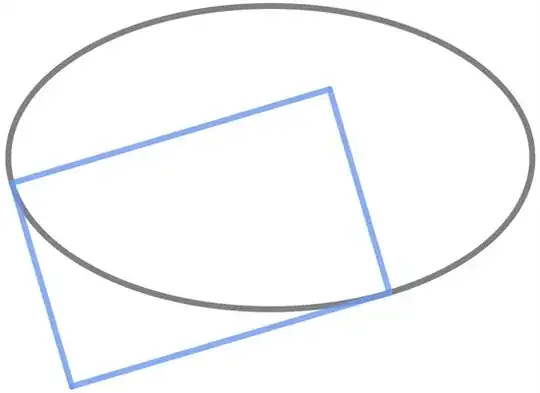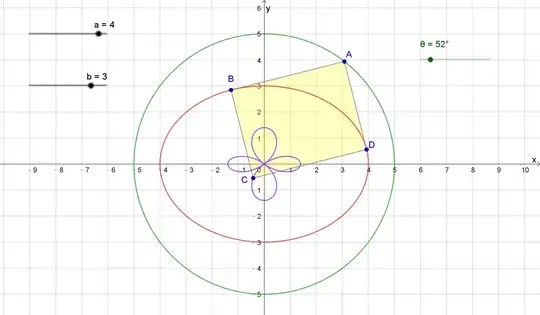Let a and b be the lengths of the semimajor and semiminor axes of an ellipse respectively.
Draw a rectangle whose two sides are tangent to the ellipse and the other two are normal to the ellipse.
I want to find the area enclosed by the locus of the vertex of the rectangle at which the normals meet.
Solution:-
My attempt:- We are required to find the locus of point $(h,k)$ from which two perpendicular lines can be drawn which are normal to the ellipse.
Normal to the ellipse at the point $(a \cos{\theta}, b\sin{\theta})$ is given by $ax\sec{\theta}-by\csc{\theta}=a^2-b^2$ and the slope of this normal is given by $m=\frac{a}{b}\tan{\theta}$
Now how to proceed futher?
Now by putting $x=h, y=k$ how to eliminate $\theta$ and write the equation in m?
And how to arrive at the final answer?
If any member knows the correct answer may reply with correct answer.
The graph of the vertex of the rectangle at which the normals meet provided to me is as follows
Answer provided to me for the required area is $(a-b)^2\pi$
I tried to plot the equation provided in the comment section, in www.wolframalpha.com but it failed. see Here


